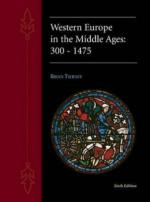|
This section contains 271 words (approx. 1 page at 300 words per page) |
The Middle Ages in Western Europe
Each king had lords that served the king so the kind would divide his state into manors for each lord. Those lords had nobles underneath them who kept the manors running. The nobles and lords always had a struggle with the church because during the "age of faith" people were very religious and obeyed the pope. Each pope translated the bible to their benefit and the people obeyed them. Under the nobles and lords were the serfs, the lowest on the social ladder. These underclass man and women kept the manor running in exchange for land. The serfs had little or no land because they were thought to be unworthy.
The manors were self-sufficient. The people produce their own food and other important needs of the people. No trade was allowed. During the middle ages the Catholic Church was without question the dominating influence on all aspects in Western Europe. It had social, political, economic, military, and artistic roles as well. The church began to abuse their power and soon became corrupt.
Schisms became most popular and this abuse actually set off the reformation. Pope Leo X wanted to build a new cathedral but he didn't want to use his own money, so he promoted a scam to raise it. He decided to start selling indulgences. Soon after, people started protesting.
This was a major dent in the soon corruption of the church during renaissance times.
|
This section contains 271 words (approx. 1 page at 300 words per page) |


